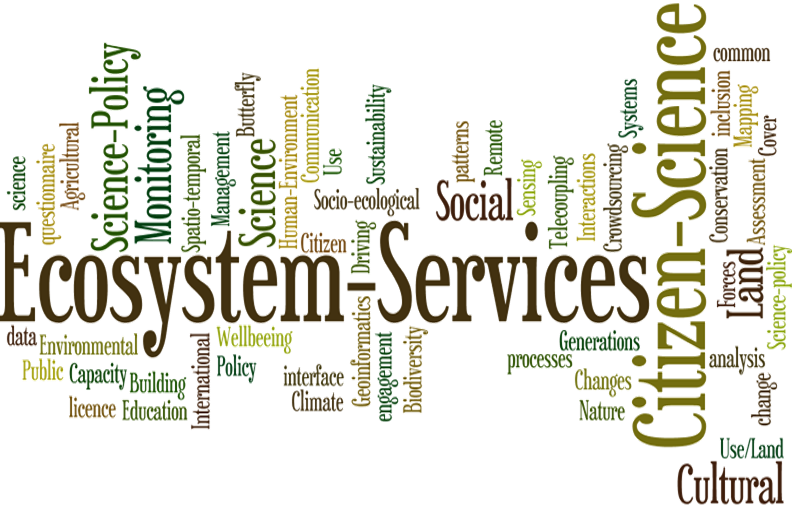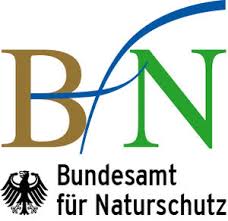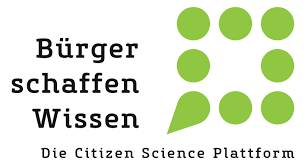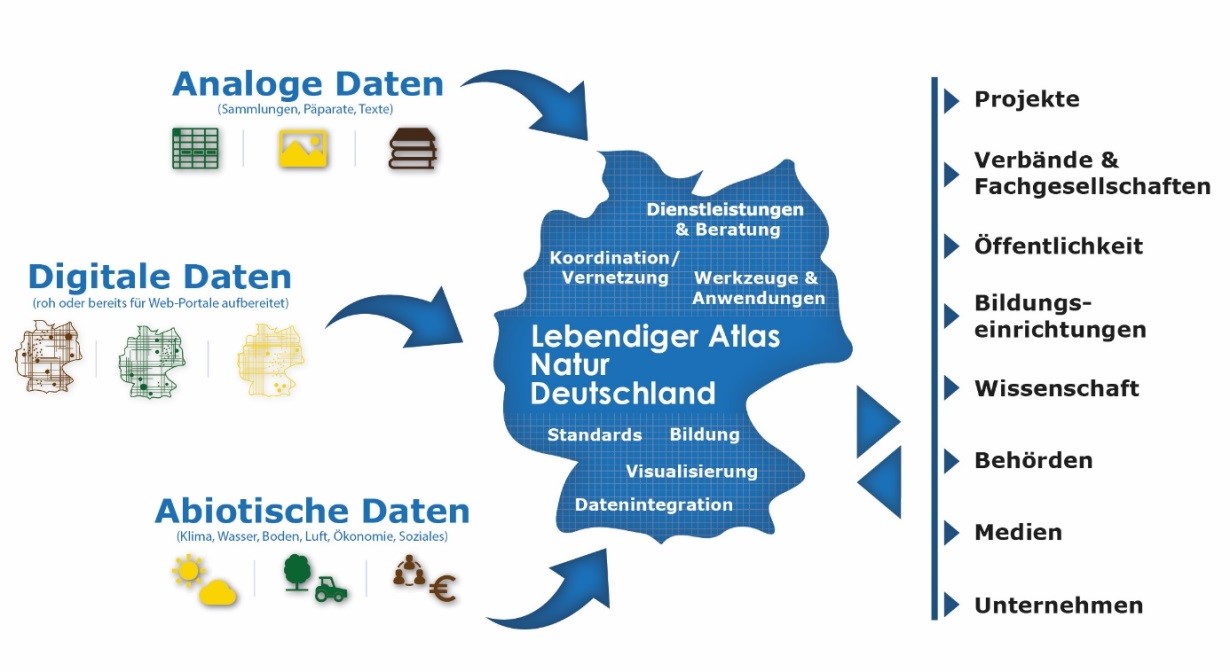Research at Ecosystem Services Department

Ecosystem Service Change
Projects:
- ESuDis - Effects of land management on the Supply and Distribution of ecosystem services
- INTERCEDE
- Inequalities in ecosystem services supply and demand: a Chile case study
- DFG Biodiversity Exploratories
- Fitness Check of the EU’s Common Agricultural Policy
- GrazeLIFE
- Ecosystem services in river restoration projects
Working Groups:
- sTradES
- Advancing interdisciplinary research on social-ecological networks to understand ecosystem services across scales - SESYNC Working group
- Social-ecological dynamics of ecosystem services: PECS Working group (Programme for Ecosystem Change and Society)
- Biodiversity & Ecosystem services (ESP Working group – TWG 2 (Ecosystem Services Partnership)
- Global ES Flows (ESP Working group – TWG 11 (Ecosystem Services Partnership)
- Telecoupling Research Towards Sustainable Transformation of Land Systems: Global Land Programme (GLP) Working group
Completed Projects & Working Groups
- ECOPOTENTIAL - Improving future ecosystem benefits through earth observations
- Use and demand of cultural ecosystem services in the Bavarian Forest National Park
- sTeleBES - Telecoupled use of biodiversity and ecosystem services: synthesis of concepts, methods and evidence
- Historical Ecosystem Services of Natural Heritage Sites in Germany (Nationales Naturerbe)
- Urban Ecosystem Services of Urban Gardens in Leipzig and Lisbon (UGALL)
Biodiversity & Health
Projects:
- Dr. FOREST
- Biodiversity and Health in Urban Areas – LIFE Adult cohort analysis
- Exploring the pathways linking biodiversity to human health and well-being - Volkswagenstiftung Symposium
- Impact of urban and peri-urban blue and greenspaces on human mental health and mental well-being - EKLIPSE Expert Working Group
- People, biodiversity and behaviour change
- Impact of soundscapes in urban parks on human well-being - external PhD Konrad Uebel
- How and where does nature matter for human well-being, and for whom? - external iDiv Flexpool PhD Joel Methorst
Completed Projects:
- Conference Biodiversity and Health in the face of Climate Change
Citizen Science and Biodiversity Change
Projects
- VielFalterGarten
- sMon - Trend analyses of biodiversity data in Germany
- InsektenMobil - Mobile citizen science observatory for insects
- FLOW: Freshwater Monitoring Citizen Science project
- Coolspots! Leipzig schools project
- Israeli Butterfly Monitoring Scheme (BMS-IL)
- PhenObs
- PolDiv
Completed Projects
- Living Atlas Germany - Feasibility Study
- Citizen Science - Capacity Building for Germany: BürGEr schaffen WISSen- Wissen schafft Bürger (GEWISS)
- ECSA 2016
Current Projects (short description)
Ecosystem services in river restoration projects
River restoration projects have for long focused on recovering degraded ecosystem features and functions; however, there is an increasing tendency of moving the focus away from recovering the functions of idealized pristine rivers to ecosystem services actually demanded by people. Despite the vast amount of river restoration projects taking place worldwide, little research has examined to which point ecosystem services do increase after river restoration.
We are set to undertake the most comprehensive literature review up-to-date on this topic and are looking forward to collaborators in this endeavor. Within this context, we offer a number of internships, bachelor and master thesis to explore parts of our database and reveal how ecological restoration projects is succeeding (or failing) in recovering biodiversity, ecosystem functioning and ecosystem services.
In particular, we welcome students interested in exploring: i) which ecosystem services have been measured before and after restoration projects; ii) which techniques are used to assess the change in ecosystem services (biophysical, economic, social) and integrated in decision-making; iii) how ecosystem services change with different types of restoration projects (active / passive, biological / geomorphological, etc.).
If you are interested in any of these topics, please, send an
email to Maria Felipe-Lucia
, stating the research questions you are most interested on and a short CV. We are looking forward to working with you!
Contact: Maria Felipe-Lucia
ESuDis - Effects of land management on the Supply and Distribution of ecosystem services
The main goal of ESuDis is to understand the different pathways by which anthropogenic and natural capitals are combined to sustainably co-produce ecosystem services and contribute to the equitable distribution of these services (Fig. 1).
We will investigate how increasing land use intensity and the substitution of natural capital by human, social, technological and financial capitals affect (i) the supply of multiple ecosystem services (scientific objective 1), (ii) the distribution of those services across different stakeholders and multiple spatial scales, in terms of use and demand (scientific objective 2); and (iii) how supply and distribution relate to the governance of ecosystem services (scientific objective 3).
Contact: Maria Felipe-Lucia
VielFalterGarten
VielFalterGarten is a communication and education model project for the development of biodiversity in urban spaces for insects using the example of butterflies. The project has three main aims:
(i) Educational aim
(ii) Butterfly protection
(iii) Capacity building and network building
Contact: Guy Peer
Dr. FOREST
To better combine biodiversity conservation with ecosystem
management that supports human health and well-being, a group of researchers
has set out to quantify the impacts of forest biodiversity on human health.
The Dr. FOREST research project aims to:
- Study the effects and underlying mechanisms of tree diversity in temperate forests on human health and well-being;
- Understand and predict the integrated effects of global change factors (climate change, air pollution) on biodiversity-related health issues;
- Valuate/qualify tree diversity benefits to human health and well-being, and communicate these findings to local and high-level international stakeholders.
Dr. FOREST research project will work with stakeholders from local to national to European scale. The project consists of tree diversity research sites that are spread out in different climatic regions of Central Europe, namely Austria, Belgium, France, Germany and Poland.
Dr. FOREST seeks to develop useful decision tools and raise awareness of interlinkages of biodiversity and human health, and the need to better understand the effects and underlying mechanisms of tree diversity and human health and well-being.
Contact: Kevin Rozario
InsektenMobil - Mobile citizen science observatory for insects
This project works with volunteers across Germany to record insects using car nets to assess the impact of land use intensity and fragmentation of insect populations. DNA-metabarcoding and automated image classification methods are developed with partners to aid insect identification. In addition, we analyse motivation in conservation-based citizen science.
Contact:
Birte Peters
FLOW: Fließgewässer erforschen - gemeinsam Wissen schaffen
The aim of the FLOW monitoring is to investigate the potential of Citizen Science for ecological und ecotoxicological freshwater monitoring. We are developing a Citizen Science programme to assess the aquatic insect and invertebrate diversity as indicators for the ecological status and pesticide contamination of streams in the three German federal states Saxony, Thuringia and Saxony-Anhalt in 2020 and 2021. The participating citizen scientists will also assess the structural quality of the stream habitats and measure basic chemical water quality parameters.
FLOW will complement the German national stream monitoring programme (KGM) organised by the UFZ-Department System-Ecotoxicoloy and the German Federal Environmental Agency (UBA). To carry out the volunteer trainings and fieldwork, we are working in close cooperation with the ‘environment buses’ of the Saxonian Foundation for Nature and Environment (LaNU).
Contact: Julia von Gönner
Israeli Butterfly Monitoring Scheme (BMS-IL)
is the leading Citizen Science project in the country. Established in 2009, it now covers Israel’s diverse ecosystems, from hyper-arid deserts to humid-Mediterranean mountains. BMS-IL includes four main data collecting activities: Pollard Walks (regular transects counted under a standard international protocol), rare species surveys, sporadic observations (with no protocol) and The Great Butterfly Count, in which the public is invited to count butterflies using a simple yet rigorous protocol. The scheme is supported by volunteer coordinators, butterfly experts volunteering to train and guide new butterfly monitorers, an internet based portal and database, various smartphone applications easing observation recording and an iDiv-based scientific team.
Contact: Orr Comay
Use and demand of cultural ecosystem services of local visitors vs tourists in the Bavarian Forest National Park
Protected areas are traditionally seen as areas for biodiversity conservation and nature protection. Incorporating the ecosystem service (ES) concept contributes to a more holistic approach that captures the multiple benefits of ecosystems to people. Protected forest areas are key for biodiversity conservation and the supply of ecosystem services, but there is little research on the actual use and demand of these services, particularly of cultural ecosystem services (CES). Recognition and appreciation of CES benefits by people are a way to assess use and demand of CES in protected areas, as they are the translation of benefits into values by perception. In addition, forests are important for their restorative effects on human well-being. In order to manage CES in protected forests it is key to understand how different types of visitors (i.e. local vs. tourists) experience forest restorative effects, and also how they use and demand CES.
In this project, we selected eight CES and asked participants to state their preferences about this and the spatial location where CES were perceived. This spatial data will be compared to indicator maps of potential supply of CES to investigate whether the potential and realized supply overlap. The results of this study will provide key information regarding the determinants and constraints for the use of CES and will contribute to the sustainable management of visitor flows in protected areas.
Contact: Jonna Heuschele
Inequalities in ecosystem services supply and demand: a Chile case study
The aim of this project is to assess patterns of ecosystem services (ES) supply and demand and its relation to land tenure and landscape attributes. It will delve into local, national and international teleconnections affecting the local supply and demand of ES which are important for understanding the local distribution of ES and their equity effects. The project seeks to understand how equal/unequal is the local distribution of ES supply and demand, and their spatial and temporal relationships. Two main administrative units of analysis will be used; the farm property and the municipality. Data is available from publicly available sources. The main research question is: how do biophysical and socioeconomic variables affect the equality of ES supply and demand distribution?
Contact: Felipe Benra
Volkswagenstiftung Symposium - Exploring the pathways linking biodiversity to human health and well-being
Biodiversity impacts human health and wellbeing in a variety of ways. However, the causal mechanisms linking biodiversity to human health and well-being are little understood. This is because there is currently no framework that delineates the causal pathways by which biodiversity influences human health and wellbeing. This lack of causality in biodiversity and health relationships limits medical and ecological research as well as treatment development and policy influence for the use of biodiversity in public health interventions.
Our main aim is to synthesize the existing evidence on biodiversity and health, with a particular focus on the mediating, causal pathways, in order to create a biodiversity-health framework.
This symposium will draw insights from different fields, including ecology, psychology, environmental epidemiology, medicine, public health and geography, among others (which to-date have only partially analysed the effect of biodiversity on human health and wellbeing) to identify the underpinning mechanisms and appropriate methods and metrics to more robustly assess biodiversity’s influence on human health and well-being.
Contact: Melissa Marselle
People, biodiversity and behaviour change
Conservation goals of the Convention of Biological Diversity, enshrined in international and national policies, have been repeatedly missed. The conclusions of the 2019 global assessment on biodiversity of the Intergovernmental Science-Policy Platform on Biodiversity and Ecosystem Services are stark: biodiversity and ecosystem functions and services are deteriorating worldwide, and goals for conserving and sustainably using nature cannot be met under current trajectories. Human activities are the main driver of biodiversity crisis (Cardinale et al. 2012) and solutions lie in changing people’s attitudes and behaviours towards the natural world (Amel et al. 2017; Byerly & Fisher 2017; Byerly et al. 2018; Kidd et al. 2019; Selinske et al. 2018). In psychology, behaviour change interventions are a coordinated set of activities designed to change specific choices and practices (Michie & West, 2013; Michie et al 2011). Translating conservation actions into behaviour change interventions requires drawing on conservation and environmental psychology.
This project aids biological conservation goals by investigating how people perceive and act on the environment in order to encourage pro-environmental behaviour change. We do this by interrogating existing national biological conservation policies in order to identify gaps in behaviour change interventions. We also analyse the behaviour change outcomes from participation in conservation-based citizen science projects.
Contact: Melissa Marselle
Biodiversity and Health in Urban Areas – LIFE Adult cohort analysis
In Europe, preventable, noncommunicable disease accounts for 77% of the total disease burden (World Health Organization, 2017). These preventable diseases are expensive to treat (World Health Organization, 2016). As such, governments need to reduce these health costs by implementing cost-effective measures for health prevention and promotion (ten Brick et al., 2016; World Health Organization, 2016).The natural environment is a novel, cost-effective, approach for the prevention of these preventable health issues (Bird, 2007; Frumkin & Fox, 2011; Maller et al., 2005) with studies showing a health benefit from exposure to green and/or blue spaces (Gascon et al., 2015; Van den Berg et al., 2015).
However, in these studies, the natural environment is often treated as homogenous - without consideration of its type or biological quality.
To do this, we conduct analyses of secondary health data, using the University of Leipzig Medical Faculty’s LIFE-Adult-Study, with GIS datasets of the natural environment.
Contact: Melissa Marselle
EKLIPSE Expert Working Group - Impact of urban and peri-urban blue and greenspaces on human mental health and mental well-being
The Expert Working Group will assess and synthesize relevant knowledge related to the types and characteristics (components) of urban and peri-urban natural spaces (blue and green) that have significant impact on human mental health and mental well-being. This working group is a direct policy request from Working Group Biodiversity & Health of the French National Action Plan Health & Environment lead by the French ministry of Environment.
Contact: Melissa Marselle

ECOPOTENTIAL - Improving improving future ecosystem benefits through earth observations
ECOPOTENTIAL is a large European-funded H2020 project that focuses its activities on a targeted set of internationally recognised protected areas, blending earth observations from remote sensing and field measurements, data analysis and modelling of current and future ecosystem conditions and services. ECOPOTENTIAL considers cross-scale geosphere-biosphere interactions at regional to continental scales, addressing long-term and large-scale environmental and ecological challenges.
Within the project we are contributing to work on participatory approaches for the assessment of cultural ecosystem services for three national parks.
Contact: Volker Grescho
Interregional Flows of Ecosystem Services (sTeleBES)
Ecosystems providing ecosystem services are often located far away from areas where people live and benefit from these services. Such inter-regional flows of ecosystem services can be induced by both human activities and environmental flows. Through use of such ecosystem services, countries can impact on biodiversity and the capacity to provide services beyond their territory. To date, however, national ecosystem assessments regularly consider ecosystem services only within national boundaries.
We are co-leading the international sDiv working group sTeleBES to synthesise theory, methods and indicators on interregional flows of ecosystem services. Research in the department focusses on assessments of interregional flows of multiple ecosystem services with a special focus on Germany.
Contact: Aletta BonnAtlas of Ecosystem Services
We are finalising the Springer volume Atlas of Ecosystem Services: Drivers, Risks and Societal Responses synthesising recent work across the UFZ an external partners concerning spatial ecosystem service assessments that address risks to ecosystem services from multidisciplinary perspectives. The Atlas addresses different components of ecosystem services, assesses risks and vulnerabilities, identifies benefits derived from these services and outlines governance and management opportunities. We hope the Atlas will be inspiring to a wide audience, both from policy and practice and from different scientific disciplines. The emphasis is on ecosystems in Europe.
Contact: Aletta Bonn

Historical Ecosystem Services of Natural Heritage Sites in Germany (Nationales Naturerbe)
Natural heritage sites are recently protected areas, often former military sites, that allow for the conservation of unique cultural habitats as well as for rewilding of woodlands. The dynamics of ecosystem services relate to the use and cultivation of land today and in the past. Using GIS analyses, interviews and expert workshops, we address the following research questions:
- Which ecosystem services have been provided by natural heritage sites during the past 150 years?
- How do the dynamics of ecosystem services relate to past and current cultural practices and land use change?
Working in collaboration with experts from historical sciences and cultural landscape planning we investigate the supply and demand of ecosystem services on natural heritage sites today and in the past. Findings will support the understanding, conservation and sustainable development of natural and cultural heritage in Germany and will advance the temporal dimension of the concept of ecosystem services.
Contact: Anett Richter

Trend analyses of biodiversity data in Germany (sMon)
Many species in Germany are threatened or endangered and many indicators point at an progressive loss in species occurrences and/or abundances, and thereby most likely also ecosystem functions and services. Statistically sound data for changes in biodiversity is, however, often lacking for most species groups or only available at coarse scales. sMon is a synthesis project of the German Centre for Integrative Biodiversity Research (iDiv) Halle-Jena-Leipzig. We aim at combining and harmonizing exemplary datasets of different taxa and habitats to evaluate the potentials and limits for analysing changes in the state of biodiversity in Germany by:
- Joint working with federal state conservation agencies and natural history societies
- Screening, harmonizing and integrating heterogeneous different data, such as time series and raster data for exemplary species groups (e.g. vascular plants, amphibia, odonata, orthoptera)
- Development of statistical methods to derive statistically sound trends of change
- Linking to ecosystem functions and services
Contact: David Eichenberg

Ecosystem Services, Biodiversity and Human Wellbeing
Climate change poses significant challenges to both biodiversity and human health and wellbeing. Thankfully, nature protection, restoration and conservation can mitigate climate change and foster human health and wellbeing.
There is significant awareness on the use of natural environments for human health and wellbeing from local, national and international governments and organisations. Building on this, is a growing recognition of the importance of biodiversity to human health and wellbeing. Understanding the impact biodiversity has on human health and wellbeing is required to implement nature-based solutions for climate change adaption - and public health.
In this project we address the following research questions:
- Does the biodiversity around the home influence residents’ physical and mental health?
- What are the pathways through which biodiversity influences health?
- Is it possible to ‘grow your own well-being’? Is there a relationship between gardeners’ wellbeing and the biodiversity of their allotment garden?
Weblinks:
Conference Biodiversity and Health in the face of Climate Change
Contact: Melissa Marselle
Fitness Check of the Common Agricultural Policy
An interdisciplinary team has evaluated the CAP performance from socio-economic and environmental perspectives (including climate, soil, water, biodiversity and ecosystem services, as well as animal welfare), and assessed the CAP’s relevance and potential contribution to fulfilling the UN’s Sustainable Development Goals (SDGs). Since 2017, the authors have assessed the EC’s proposal for the CAP post-2020, evaluated the reform process, and are continuously engaged in developing recommendations.
Considering ongoing declines in biodiversity and ecosystem services, the project aims to enhance the contribution of the EU’s agricultural policy to halt these losses using best knowledge. To this end, the project specifically aims to improve the state of our knowledge, as well as its uptake in agricultural policy.
For more information, visit the CAP Fitness-check website: www.idiv.de/cap-fitness-check
Contact: Guy Peer

Citizen Science - Capacity Building for Germany
The UFZ led the “GEWISS” (BürGEr schaffen WISSen, or “Citizens create knowledge” 2014-2017) national capacity building program to help strengthen existing partnerships and to identify gaps and capacity needs for citizen science in Germany. As key output, the “Citizen Science Strategy 2020 for Germany” was developed in collaboration with >700 participants from 350 organisations through a series of dialogue forums and an online consultation with over 1000 website visitors, 400 comments and 53 formal position papers submitted on the draft Strategy paper. Furthermore, citizen science guides and films were developed to strengthen citizen science capacities. The Strategy Paper resulted in the establishment of the first funding scheme for Cititzen Science in Germany by the
Federal Ministry of Education and Research (BMBF)
.
With DFG funding, we organised the first European Citizen Science conference (
ECSA 2016
) in Berlin, May 2016, with more than 360 participants from 30 countries, globally. Funded by the Federal Ministry of Environment (BMUB) we developed recommendations for a new citizen science funding scheme with experts from NGOs, agencies and microfinancing organisations in January 2018.
Contact: Susanne Hecker
Completed Projects
Climate change has significant impacts on society and biodiversity. People are likely to experience climate change impacts most directly in cities and urban areas. Technical solutions are only one aspect of climate adaptation and mitigation, while nature-based solutions can foster functioning ecosystems as essential backbone to climate mitigation and adaptation. Management that focusses on green infrastructure as measure towards greening cities has the potential to meet several goals across sectors and may also be cost-effective and sustainable. Nature-based solutions to adaptation can therefore help to address both the 2020 targets of the Convention on Biological Diversity (CBD) as well as those of the Framework Convention on Climate Change (UNFCCC).
Building on the international conference 'Climate change and Nature Conservation in Europe - an ecological, policy and economic perspective' held in Bonn in 2013, the research project BioClim (European Conferences on Biodiversity and Climate Change, project duration 11.2014-09.2017) addresses research on nature-based solutions and ecosystem based adaption in urban areas with special focus on biodiversity, climate adaptation & mitigation and its linkages to social cohesion. In cooperation with the BfN (Federal Agency for Nature Conservation) and ENCA (European Network of Heads of Nature Conservation Agencies), BioClim will bring together scientists, practitioners and policy makers to discuss the links of nature-based solutions to important urban challenges related to climate change. The aim is to showcase and explore good practice of nature-based solutions to climate change mitigation and adaptation in Europe’s urban areas and their surrounding landscapes, and to analyse challenges and identify indicators of success. An explicit goal is to assess how the concept of nature-based solutions can help conservation to work across sectors in collaboration with e.g. urban planning, architecture, forestry, water and health.
Reference to Kabisch et al. 2016
In November 2015 a joint BfN/ENCA European Conference on Nature-based Solutions to Climate Change in Urban Areas and their Rural Surroundings 17-19 Nov. took place held in Bonn/Germany (conference presentations).
GEWISS “BürGEr schaffen WISSen “or “Citizens create knowledge” (2014-2017)
The UFZ led the “GEWISS national capacity building program to help strengthen existing partnerships and to identify gaps and capacity needs for citizen science in Germany. As key output, the “Citizen Science Strategy 2020 for Germany” was developed in collaboration with >700 participants from 350 organisations through a series of dialogue forums and an online consultation with over 1000 website visitors, 400 comments and 53 formal position papers submitted on the draft Strategy paper. Furthermore, citizen science guides and films were developed to strengthen citizen science capacities. The Strategy Paper resulted in the establishment of the first funding scheme for Citizen Science in Germany by the Federal Ministry of Education and Research (BMBF) .
The first European Citizen Science Conference ( ECSA 2016 ), held on 18-21 May 2017, organized by the GEWISS team with the European Citizen Science Association ( ECSA ) and international partners, with more than 360 participants from 30 countries, debated the current state of the art in citizen science in Europe and globally. The conference fostered interactive and open formats for all with a Citizen Science Disco, a Citizen Science Thinkcamp and a Citizen Science Fest.
Contact: Anett Richter , Susanne Hecker
About the project
Urban gardens can contribute to nature-based solutions in promoting biodiversity and thereby ecosystem services, such as food provision, climate and water regulation, opportunities for leisure and recreation and to some extent also to social cohesion. We investigated the contribution of both allotment and community gardens to urban ecosystem services and assess differences in gardener’s motivation respecting service demand and provision. We used the City of Leipzig as case study, as it has a long-lasting tradition of allotment gardening initiated by the Schreber movement in the late 19th century leading to one of the highest density of urban garden areas among European cities (2.8% of the city area and 16 m² per citizen).
To foster outreach, we also initiated and contributed to the design of an exhibition in the Botanical Garden featuring how biodiversity and ecosystem services can be fostered in urban gardens
